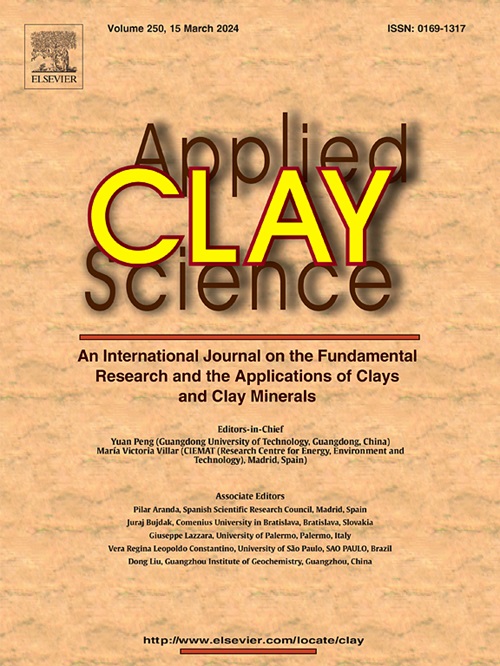Study of the mineralogical and textural properties of bricks with volcanic ash temper
IF 5.3
2区 地球科学
Q2 CHEMISTRY, PHYSICAL
引用次数: 0
Abstract
During the eruption of the Tajogaite volcano in La Palma (Canary Islands, Spain) in 2021, large amounts of pyroclastic material were emitted, which had severe environmental, health and economic impacts on nearby localities. One solution for the disposal of the volcanic ash that settled on the streets, roads, and roofs of La Palma is to use it as temper in brick production, which would also reduce the amount of clay required to make the bricks. Two different sizes (fine and coarse) and three percentages (10, 20, and 30 % by weight) of volcanic ash were added to a clayey sediment from Viznar (Granada, Spain) to produce bricks that were fired at 800, 950, and 1100 °C in an electric oven with an oxidising atmosphere. The chemistry, mineralogy and texture of the samples with volcanic ash were compared to control samples made without it and fired at the same temperature. In the bricks with ash there was a reduction in the phases detected in the control samples (quartz, phyllosilicates, and newly formed gehlenite, and diopside) and augite, a phase present in the volcanic ash, appeared. The volcanic ash fragments in the samples fired at over 950 °C turned red in color, owing to the formation of iron oxides. The increase in the concentration of volcanic ash caused a progressive increase in the vitreous phase and in clinopyroxene. Conversely, there were no significant differences in terms of their mineralogical composition between the fired bricks made with fine or coarse ash, although the samples with coarse volcanic ash apparently showed higher porosity.
求助全文
约1分钟内获得全文
求助全文
来源期刊

Applied Clay Science
地学-矿物学
CiteScore
10.30
自引率
10.70%
发文量
289
审稿时长
39 days
期刊介绍:
Applied Clay Science aims to be an international journal attracting high quality scientific papers on clays and clay minerals, including research papers, reviews, and technical notes. The journal covers typical subjects of Fundamental and Applied Clay Science such as:
• Synthesis and purification
• Structural, crystallographic and mineralogical properties of clays and clay minerals
• Thermal properties of clays and clay minerals
• Physico-chemical properties including i) surface and interface properties; ii) thermodynamic properties; iii) mechanical properties
• Interaction with water, with polar and apolar molecules
• Colloidal properties and rheology
• Adsorption, Intercalation, Ionic exchange
• Genesis and deposits of clay minerals
• Geology and geochemistry of clays
• Modification of clays and clay minerals properties by thermal and physical treatments
• Modification by chemical treatments with organic and inorganic molecules(organoclays, pillared clays)
• Modification by biological microorganisms. etc...
 求助内容:
求助内容: 应助结果提醒方式:
应助结果提醒方式:


